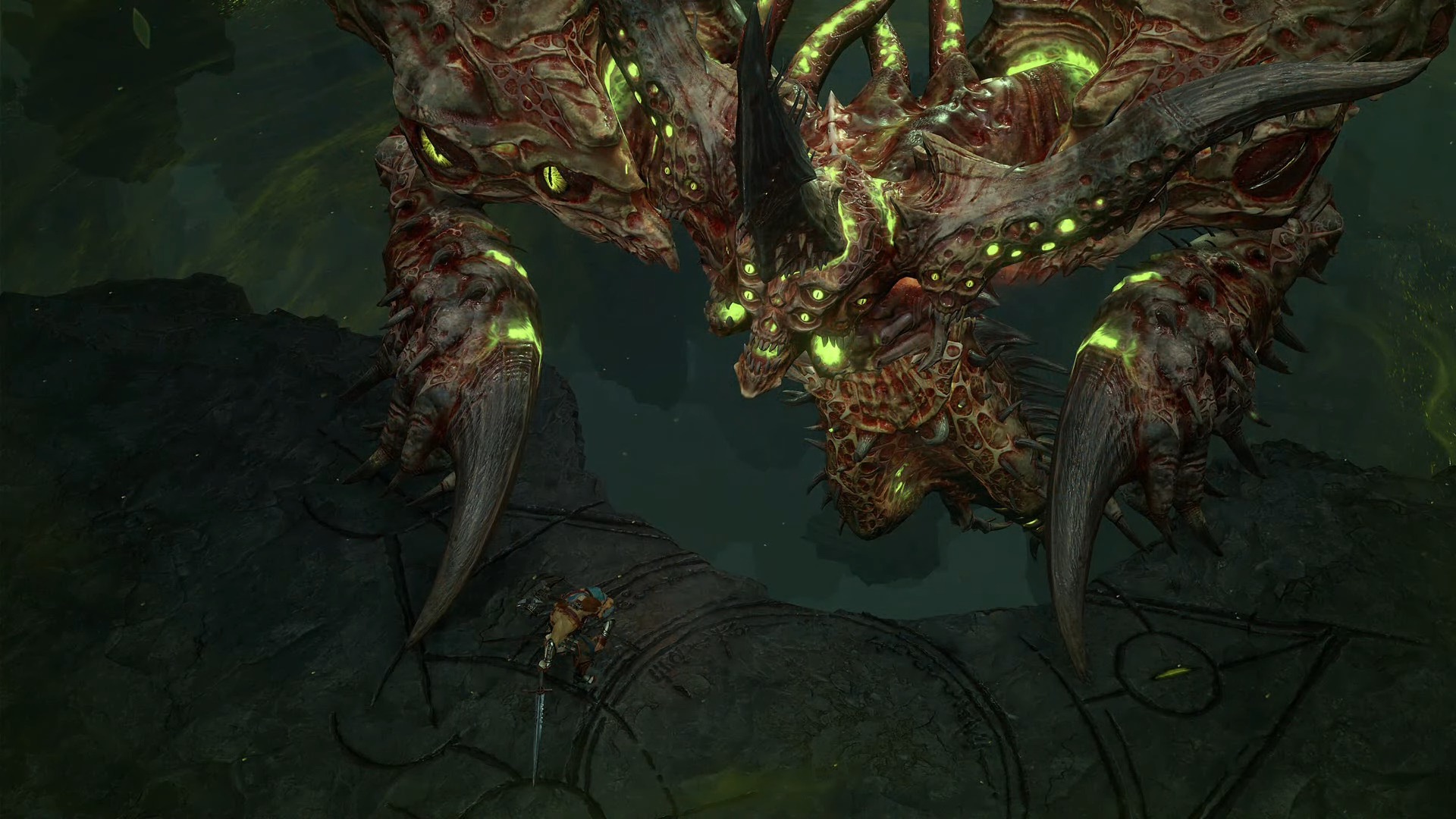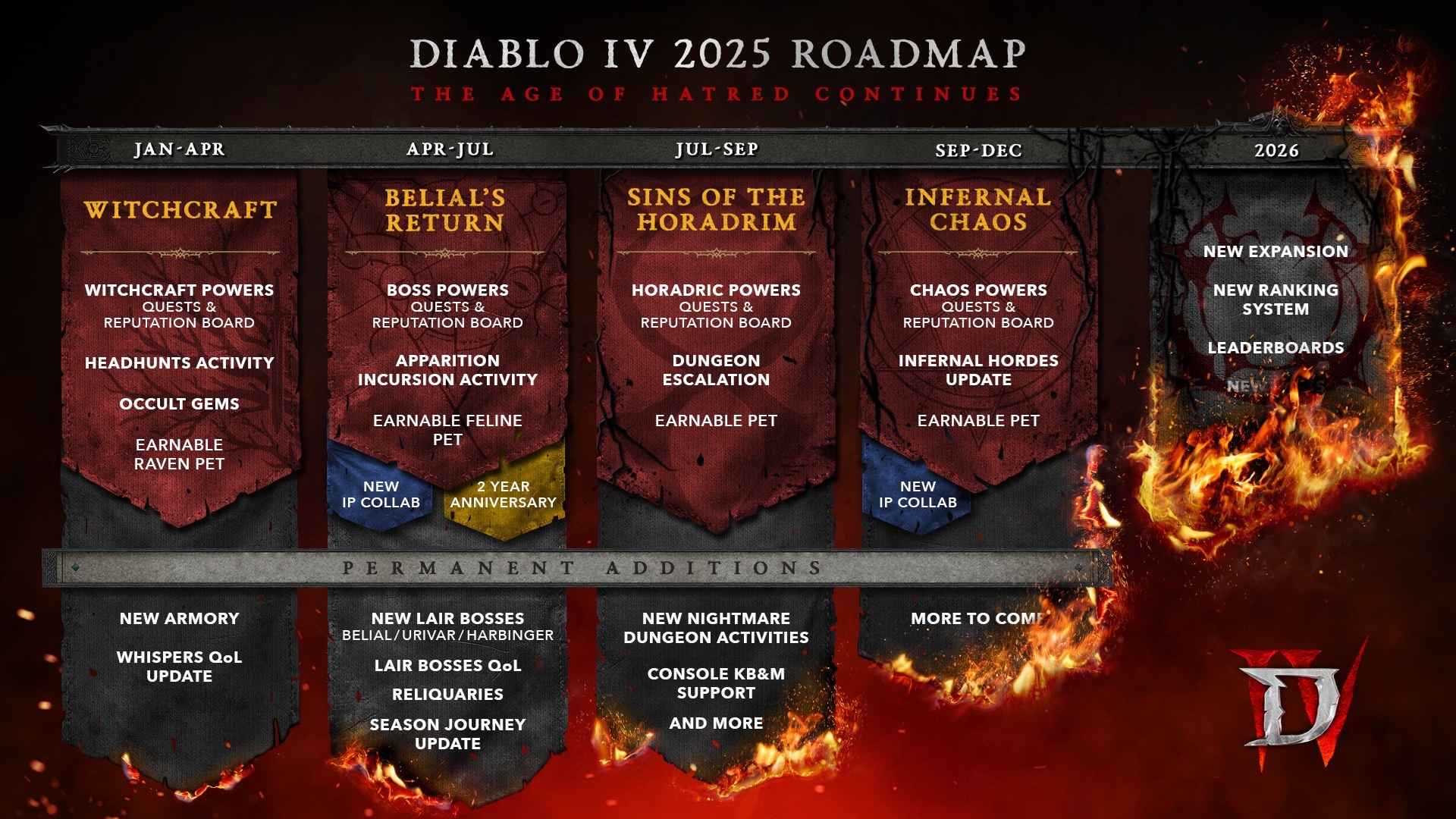
Recently, Blizzard unveiled its Diablo 4 roadmap, and responses have been a bit mixed.
Diablo 4 is a highly anticipated follow-up to the iconic action role-playing game series that pioneered its genre. When it initially launched, it seemed like an excellent foundation for creating something extraordinary, however, over time, some of the initial excitement appears to have diminished.
I find myself no longer engaged with Diablo 4 due to the fact that the seasonal content doesn’t seem very appealing to me. Each season appears quite similar, and it’s hard not to notice the stark contrast between this and the abundance of content I receive while playing World of Warcraft. In comparison, even WoW’s smaller mid-season update feels more substantial than some of Diablo 4’s seasons. Part of the issue seems to be that Diablo hasn’t managed to learn from WoW’s past errors in this regard.

In recent seasons, World of Warcraft experienced a significant drop, but it seems to be making a comeback as suggested by recent API data. One factor that contributes to this resurgence, in my opinion, is the shift in the philosophy of the Warcraft team regarding the concept of borrowed power.
The term ‘Borrowed Power’ is used to describe advancement systems that are either taken away or reset at the start of a new season. For instance, in World of Warcraft: Battle for Azeroth, players could enhance a potent necklace, but would relinquish it when the expansion concluded. Similarly, in Shadowlands, players aligned with afterlife factions through Covenants, but lost their powers upon leaving.
It became incredibly annoying and seemed completely predictable as I realized that all the advancements made during the expansion would eventually hold no significance in the grand scheme. This has often been the case with games similar to this one, but the use of ‘borrowed power mechanics’ really drove home that inevitable truth.
Recently, the content creator for Diablo 4, known as Rhykker, had a conversation with Diablo 4’s lead developer, Brent Gibson. This discussion delved deeper into the details of Blizzard’s recently unveiled plan for Diablo 4.
The plan resembles Blizzard’s World of Warcraft layout in terms of transparency, a commendable move. It serves as a helpful tool for them to collect feedback, and judging from the comments on Rhykker’s video and the Diablo 4 subreddit, there’s no shortage of people eager to offer their thoughts.
Much of the conversation focuses on the troublesome mechanisms of borrowed powers, which Blizzard has repeatedly used excessively in Diablo 4 since its release.
One reason Blizzard eliminated Borrowed Power in World of Warcraft wasn’t just due to players disliking the loss of progress at season’s end, but rather because they believed that the development time could be better utilized on features offering permanent enhancements to the game. It’s worth noting that while the Diablo 4 team has invested development hours in refining existing systems, these efforts often focus more on past aspects rather than adding long-term content.
Fans of Diablo 4 are humorously commenting that Diablo’s seasonal model mainly involves reusing old mechanics with a fresh color scheme. However, permanent updates like the overhauled boss ladder featuring Belial aren’t appearing as frequently as some players might prefer.
Comment from r/diablo4
Rhykker proposes an idea for Diablo 4 where the game could benefit from a “meta-advancement” system, allowing players to gain access to challenging bosses and new dungeons as they enhance their character’s power. I wholeheartedly concur with this suggestion. The new World of Warcraft boss Delves provide a glimpse of this concept, offering tough challenges and permanent rewards for players who have improved their gear level, making it a significant milestone for that particular gaming season.
I prefer if Blizzard took a bit more time to expand Diablo’s seasons, making them larger and more impactful, rather than hastily combining transient features that will eventually fade away when the seasons conclude. Admittedly, certain “loaned power” aspects do persist in the game as affixes, but it’s not quite as exhilarating as the introduction of entirely new systems and dungeons, which are usually associated with complete expansions.
I find Diablo 4’s design perplexing in several aspects. The only lasting prizes are transmogs (appearance customization for gear), and the best ones aren’t earned through gameplay but rather from purchasing paid DLC. Features such as World Bosses and strongholds seem lackluster during endgame play, with boss fights often feeling more like bothersome obstacles than epic final battles, offering little in return.
It’s understandable how challenging it might be for game developers to strike the right balance in games like Path of Exile 2, given that the player base is diverse and often seeks different experiences. The proposed direction for PoE2, which aims to deliver a more deliberate, difficult ARPG experience as opposed to Diablo 3’s fast-paced, high-number action, has sparked some debate. Furthermore, it’s worth noting that World of Warcraft’s subscription model provides a larger budget for its development team compared to other games.
From my perspective, it seems that the Diablo 4 team might not be utilizing their resources optimally, particularly when considering their design approach.
Read More
- PI PREDICTION. PI cryptocurrency
- Gold Rate Forecast
- WCT PREDICTION. WCT cryptocurrency
- Guide: 18 PS5, PS4 Games You Should Buy in PS Store’s Extended Play Sale
- LPT PREDICTION. LPT cryptocurrency
- Despite Bitcoin’s $64K surprise, some major concerns persist
- Solo Leveling Arise Tawata Kanae Guide
- Shrek Fans Have Mixed Feelings About New Shrek 5 Character Designs (And There’s A Good Reason)
- Elden Ring Nightreign Recluse guide and abilities explained
- Jack Dorsey’s Block to use 10% of Bitcoin profit to buy BTC every month
2025-04-09 15:09